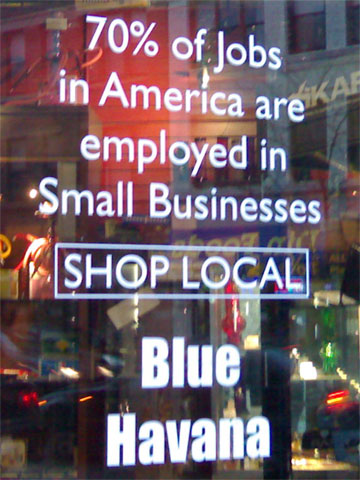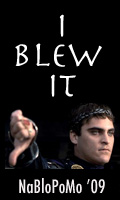My Takeaways From The Book The Death Of Meriwether Lewis
So do you think Meriwether Lewis committed suicide or was assassinated? This question is not frequently asked as most people don’t often think of the person who was one half of the duo who explored America’s new territory over 200 years ago, and more than likely had no idea about his demise. At least I had no idea of the controversy, and I was the kid in school who liked U.S. history. This topic is explored in depth in the book The Death of Meriwether Lewis by Kira Gale and James Starrs.
The book has 2 unique parts. It opens with the transcript of a coroner’s inquest for the exhumation of Lewis’ body. It is believed by many that Lewis did not commit suicide, as was his official cause of death, but rather was assassinated. The inquest was held several years ago to recommend whether or not to exhume his body and perform an autopsy based on evidence provided, and it was decided to do so. Within the transcript lies the evidence proving reasonable doubt to the original cause. The second half is the backstory of Lewis’ life and death, and who may have been behind his murder. It is an interesting story not only about his life after he and William Clark trekked west but detail of the journey itself I was not aware of.
So could I possibly have takeaways from what is in essence a history book? Certainly. My greatest takeaway is there is more to historical events than is commonly taught. The Death of Meriwether Lewis explores the circumstances around his death that I had no idea about, and after reading it was glad I finally knew them. As most grade-school history courses have to cover many decades if not hundreds of years, it is not possible to delve into each story in depth. This is probably why books such as this are selling well, as people are curious about their country’s history.
Another takeaway form this was the reference to Lewis being the Neil Armstrong of our day. The mention of this caught me off guard, as we don’t think of the mere concept of celebrities prior to Hollywood and TV. News traveled a little differently in the early 1800’s than it does today, but people’s curiosity was alive then as now.
A final takeaway was on the importance of knowing one’s history. Why would people over 200 years later care how someone died? It is the belief of many that Lewis was killed, and they wish to correct the journals of history where it is mentioned that he committed suicide. They feel the truth should come out, no matter how long ago it happened.
The Death of Meriwether Lewis is a good read and I recommend it for anyone who has an interest in history and politics. Gale is a historian and has also written Lewis and Clark Road Trips, a book on traveling today along the trail Lewis and Clark took so long ago. Both The Death of Meriwether Lewis and Lewis and Clark Road Trips have excellent companion Web sites – I know, as my Web consulting firm Dunkirk Systems, LLC developed them with Visible Logic, Inc. Though Gale is a client, I was not paid to say what I did about the book; it is my personal opinion that you should read it.
Did you enjoy reading this? You are welcome to subscribe to The Hot Iron by RSS feed or by email.
An Employment Number You Cannot Deny
Everyday there are new figures being reported on unemployment in the US. Whether it’s the number of jobs lost, jobs created, jobs saved, people who have stopped looking for jobs… it has almost gotten to the point where people are numb to those numbers. They almost don’t have any meaning – if you have a job, great, but if not, then the only number you are concerned with is the number one.
When I was opening the door of Blue Havana the other day - a great cigar shop in Chicago, I saw new lettering on the front door, and below is a picture of it.

The message reads, “70% of Jobs in America are employed in Small Businesses. Shop Local. Blue Havana.”
Maybe I am biased, as my Web consulting business Dunkirk Systems, LLC is a small business, by saying this number cannot be denied. Certainly small business employment figures are talked about quite a bit – but that is usually during political campaign speeches, and it is never heard again once the candidate is elected. While I was in there, the proprietor came by and thanked myself and my party for coming in that day and for supporting his business.
Many businesses thank you for doing business with them, but how much do they really mean it? I try to ‘return the favor” and shop local as much as I can, just as many of my clients are small businesses themselves. I am not saying big business is bad, rather I am saying small business is good!
Did you enjoy reading this? You are welcome to subscribe to The Hot Iron by RSS feed or by email.
On What I Wrote And Did Not Write
 As last year I looked back on what I did not write for The Hot Iron the previous year, I am doing so again this year.
As last year I looked back on what I did not write for The Hot Iron the previous year, I am doing so again this year.
Where in 2008 I had more ideas than the time to write them, this past year my overall blogging count was down. I could overanalyze this, but I chalk it up to its lower priority in my overall schedule. That being said, I am proud of what I wrote, and received many good comments on those posts. I met my goal of reading 12 books in 2009, even with Atlas Shrugged taking most of a year to do so. Despite this, I only blogged on half the number of books. Be on the lookout for those book takeaways in the next few weeks as I start my first books of 2010.
Then there was NaBloPoMo. I probably never should have signed up for this for the pure reason I never remembered how to spell it! I signed up to writing a post a day for every day last November. Well, I said I would do it, but in reality I was not really committed to the program. So I wear the “I blew it” badge pictured above, and next time will only commit to doing something that both interests me and is in line with my goals.
Here’s to a great year of blogging, and hearing from you in the comments.
Did you enjoy reading this? You are welcome to subscribe to The Hot Iron by RSS feed or by email.
Think Of Your Logo In Other Formats
 As businesses start-up today, they often think of a logo to aid in their branding. Most companies in 2010 are not publishing paper-based materials, thus they usually only think of their logo to be used on their Web site, or secondarily on a business card. And that’s it. However, even though you may only initially intend on using it in certain ways, taking into consideration all possible uses for a logo up-front can save time and hassle in the future should other needs arise.
As businesses start-up today, they often think of a logo to aid in their branding. Most companies in 2010 are not publishing paper-based materials, thus they usually only think of their logo to be used on their Web site, or secondarily on a business card. And that’s it. However, even though you may only initially intend on using it in certain ways, taking into consideration all possible uses for a logo up-front can save time and hassle in the future should other needs arise.
Here’s a few logo uses you should consider.
Black and White - As most people don’t choose a bland and white logo, it most likely be will be represented in some form in black and white. From photo copies to simply saving money on color ink to print in black and white, take into consideration shades of gray when your logo is designed.
Fax - When you fax a document, shades of gray disappear. Having your logo designed to look good on a faxed piece of paper. Test it if you're not completely certain.
Embroidered - When a logo is embroidered onto clothing or other fabric items, sometimes compromises must be made. The intricate details of some logos may not be able to be stitched in the same detail. Also, there may be additional charges for each color of thread that may make your golf shirt prices much higher than expected.
Full-Color Printing - In this world of digital everything, offset printing is still alive and well. Where printing in full-color should be easily be able to accurately represent your logo, it may cost you more for additional colors or colors which require special colors outside of the normal color palate.
Icon - If you want to use your logo as an icon, there are various formats to consider. The favicon which appears in a browser’s address bar is only 16 by 16 pixels. The icon on a mobile device like the iPhone is larger, but still small in comparison to how large it may be on your Web site. As well for mobile apps, you want to ensure the icon itself is compelling so uses will identify with it and use it.
Where you may not be able to anticipate every use of your logo, by knowing ahead of time the most common ones, you should be in good shape to leverage it across all formats.
Did you enjoy reading this? You are welcome to subscribe to The Hot Iron by RSS feed or by email.

